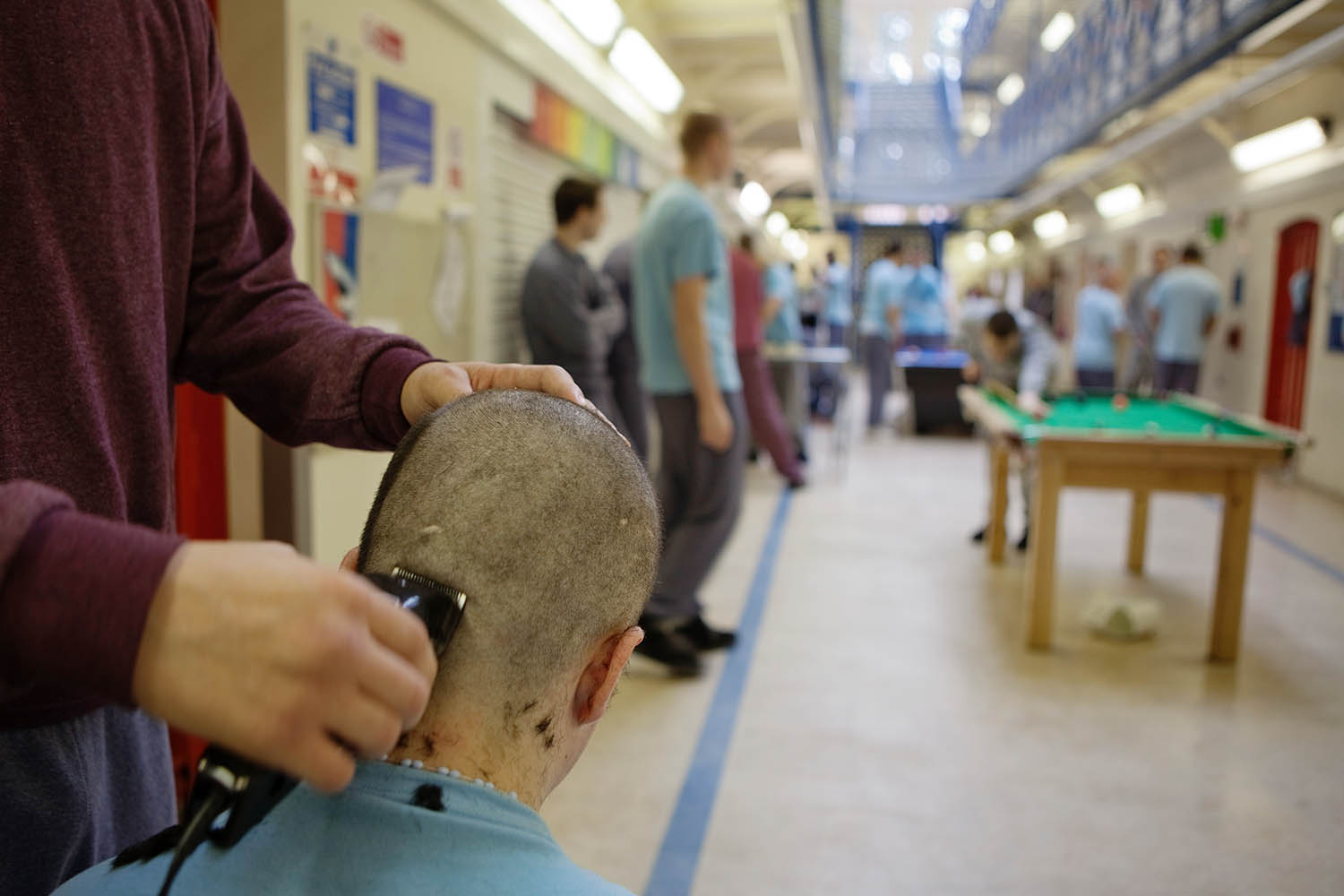When Ken Clarke was appointed justice secretary in 2010, he set out to reform a sentencing regime that had caused the prison population to spiral. He wanted to scrap most of the minimum tariffs that had been introduced over the previous 20 years, but his plans were vetoed by the then prime minister David Cameron.
During one particularly tense argument, Clarke says he asked Cameron: “Don’t you want a liberal justice secretary in your government?” Cameron replied: “Of course I want a liberal justice secretary. But I don’t want people to see that I’ve got a liberal justice secretary.”
For decades successive justice secretaries, confronted with overcrowded and dysfunctional jails, have tried to reduce the number of people being locked up. They have repeatedly been blocked by No 10 because the prime minister of the day feared that any reform would make the government look “soft on crime”. That is about to change.
This week David Gauke, the former Conservative justice secretary, will publish radical proposals to transform sentencing policy. Under the biggest shake-up for a generation, prisoners will be allowed out of jail after a third of their sentence in return for good behaviour, as part of a graduated system that will also see more offenders being put under house arrest or given community sentences and monitored with electronic tags.
There will be a presumption against short prison sentences and a greater use of drug and alcohol treatment. The aim is to ensure that there are 9,500 fewer people in prison than there would otherwise have been, a reduction of more than 10%. The plans are supported not just by Shabana Mahmood, the justice secretary, but also by Keir Starmer, the prime minister.
“Shabana is a pragmatic reformer and so is Keir,” one Ministry of Justice source says. “As a former director of public prosecutions, he understands the criminal justice system very well.”
The source added, “In the past you have often had a liberal justice secretary and a prime minister who felt they couldn’t act because of public opinion. Now you have got a situation where a failure to act is so much worse than the decision to act. Even if we threw billions at it, we couldn’t build the prison places fast enough. The burning platform means we really have no choice but to reform.”
‘In 27 years I’ve never seen overcrowding at this level. It’s the worst I’ve known it. It’s very unstable’
Pia Sinha, former governor
Gauke told The Observer: “There is clearly going to be political opposition but there isn’t an alternative to substantial reform. We are already in a position where prisons are essentially full. With projections of the prison population rising by 3,000 a year you can’t build quickly enough.”
He insisted the “penal populism” pursued by both Labour and Tory governments had failed and a new approach was required to put prisons onto a sustainable footing. “Allowing a system to collapse, allowing us to find ourselves in a position where we have run out of spaces would be irresponsible and would send a very worrying signal to society,” he said.
“I don’t think taxpayers are getting a good deal from how we spend money on the criminal justice system.”
This is about numbers rather than ideology. Despite the controversial early release scheme that saw prisoners popping champagne corks as they walked free last year, jails in England and Wales are again operating at 99% capacity. There are fewer than 500 places available in men’s jails, and the Ministry of Justice projects that, if nothing is done, the prisons will run out of space entirely by November.
In the latest emergency measure to free up cells, the government announced that thousands more offenders who are recalled to prison after breaching their licence conditions will be allowed out automatically after 28 days. Nicole Jacobs, the domestic abuse commissioner, was among those who raised concerns.
Over the past 30 years the prison population has doubled. There are almost 90,000 people in jail in England and Wales, and the UK now has the highest incarceration rate in western Europe. The increase has been driven mainly by an inexorable rise in the length of sentences. In 2005 the average custodial sentence was 13 months. By 2023 it was 21 months, a 66% increase, according to Ministry of Justice figures. Between 2010 and 2023, the sentence for manslaughter increased by 49%, for aggravated burglary by 48% and for possession of a knife by 50%.
Nicholas Phillips, the former Lord Chief Justice who was called to the Bar in 1962, says: “In my time in the law I have seen the length of sentences more than double. The cause of this has been government legislation raising maximum sentence lengths for individual offences in response to a perceived public demand for greater punishment. This has achieved nothing except help to fill the prisons at a cost the country can ill afford.”
Jails are increasingly frightening and dangerous places. Last year, there were more than 30,000 assaults, a third of them attacks on staff, and almost 80,000 incidents of self-harm. A total of 89 people took their own lives in prison and there were seven homicides, the highest number in a decade. The prison service is struggling to recruit and retain people to work on the wings. A decade ago, only 4% of officers had been working in the service for less than three years. Now it is more than a third.
Pia Sinha, a former prison governor and chief executive of the Prison Reform Trust, says: “I’ve worked in the system for 27 years and it’s the worst I’ve known it. I’ve never seen overcrowding at this level, and what compounds the situation is that you have a lot of new staff. It’s very unstable.”
Mahmood and Starmer know the Gauke reforms will also be contentious but they believe the current situation is unsustainable.
Charlie Taylor, the chief inspector of prisons, says that violence, self-harm and drug abuse are rife, and overcrowding means rehabilitation is impossible in most jails. “We are really worried about the general state of prisons,” he says. “You’ve got prisoners living in very unsanitary conditions with two men locked in cells originally designed for one person in old Victorian jails. There’s not enough purposeful activity and the churn of prisoners means that staff haven’t got the time to form the kind of relationships which are going to help to keep people safe. There are just too many people in prison for the amount of space we’ve got.”
Taylor says a “menu of drugs” is available in almost every prison in the country and he fears drones pose a national security threat. “The largest package I’ve heard about so far has been 11kg. It was a combination of mobile phones and drugs. We’re worried about the potential for weapons to get in. You’ve got some very risky people – terrorist offenders, serious organised criminals – doing very long sentences and the incentive for them to try to escape or to commit some sort of spectacular within a prison is very high.”
The “tough on crime” rhetoric favoured by politicians of all parties is at odds with the reality of a system in which 80% of offending is reoffending. About 35% of adults who leave prison in England and Wales go on to commit another crime. Among those who have served short custodial sentences the figure is even higher, at 59%. In Norway, which puts a much greater focus on rehabilitation, it is only 20%.
Max Hill, who like Starmer is a former head of the Crown Prosecution Service, believes a “vicious circle” has developed. “As a former prosecutor I’m the first to say that individuals whose criminal activity demonstrates that they are a danger must be locked up,” he says. “But we are locking up far higher numbers than are required to satisfy that principle.
“Prison is about punishment, but being tough on crime also means driving crime down and the proportion of UK citizens who are sentenced to time behind bars isn’t leading to a reduction in crime. In fact, the opposite is occurring and we are seeing very high recidivism because there’s insufficient emphasis on rehabilitation in a prison system which is bursting.”
Prisoners are some of the most damaged and distressed people in society but the system is not doing enough to deal with their problems and, in too many cases, is making them worse. Almost a third of women and a quarter of men have a drug problem when they arrive in prison. Among female prisoners, 6% report that they have developed an addiction while they are there, as do 9% of male prisoners. Nearly three-quarters of adult prisoners have literacy levels below those expected of an 11-year-old but, with many inmates locked up for 23 hours a day, there is too little time for prisoners to benefit from education, treatment or work.
James Jones, the former bishop of Liverpool who chaired an independent commission on sentencing, warns that prisons have become “warehouses for the incorrigible rather than being greenhouses for the redeemable”.
The polling suggests that the public may be more open to reform than previous prime ministers feared. A YouGov survey found that 47% of people believe that non-violent offenders should receive community sentences, compared with 36% who believe these criminals should be sent to prison. Anne Rafferty, a former Court of Appeal judge, says: “The public is fed up of gesture politics and wants to be fair.”
With the public finances in a fragile state, ministers believe there is an economic as well as a social imperative to act. The government has embarked on a £10bn prison-building programme but, on the current trajectory, even this will not deliver enough places to keep up with rising demand. It costs around £54,000 a year to keep someone in jail, compared with £8,000 to monitor them on a tag in the community.
The appointment of the businessman and prison reformer James Timpson as a minister last year was a sign that Starmer came into government determined to be radical. Nick Hardwick, the former chief inspector of prisons, thinks a tipping point has been reached.
“We are now at a point where the arithmetic trumps the politics,” he says. “They’re going to run out of space again and they’re going to run out of time to fix it. The money that we are spending on this is simply mind-boggling – think what you could do with £10 billion if you were spending it on hospitals, youth services, schools or welfare. If you ask the question ‘is it a good use of taxpayers’ pounds, does it work and does it allow for the possibility of rehabilitation?’, the answer to all of those questions is no. And if you get those things wrong, it’s not just prisoners who pay the price. We all do, because of the consequences in our communities.”
Photograph by Andrew Aitchison/In Pictures/Corbis

